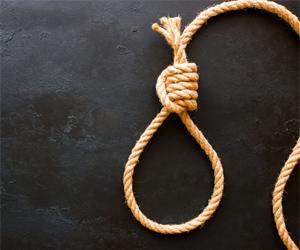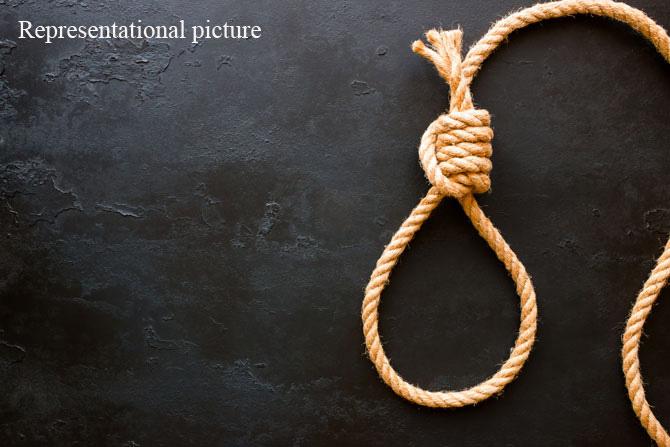On October 6, the apex court sought the Centre's response on the plea and said it also included the right of a condemned prisoner to have a dignified mode of execution so that death becomes less painful


ADVERTISEMENT
The Centre on Tuesday strongly supported a legal provision that a death row convict would only be hanged to death and told the Supreme Court that other modes of execution like lethal injections and firing were not less painful. The response of Ministry of Home Affairs (MHA) was filed after the apex court had termed the Constitution as a "compassionate" and "organic" guiding book and asked it to consider changing the law so that a convict, facing death penalty, dies "in peace and not in pain".
"Execution, as contemplated under section 354(5) of the Code of Criminal Procedure, is not barbaric, inhuman and cruel as well as in compliance with safeguard no. 9 of the resolutions adopted by the ECOSOC," the affidavit filed before a bench headed by Chief Justice Dipak Misra said. The safeguards guaranteeing protection of the rights of those facing the death penalty approved by the United Nations Economic and Social Council (ECOSOC) resolution of 1984 says "Where capital punishment occurs, it shall be carried out so as to inflict the minimum possible suffering." The counter-affidavit, filed by the joint secretary of the MHA, said that death by hanging was "quick, simple" and free from anything that would "unnecessarily sharpen the poignancy of the prisoner". "Lethal injection, which is believed to be painless, has also been contested on the ground that it may lead to uncomfortable death wherein the convict is unable to express his/her discomfort because of paralysis by the paralytic agent injected.
"It is believed by many that lethal injection, as is practised currently, is designed to create only an appearance of serenity and painless death," the MHA said, adding that such injections, if made available, can be misused. It also ruled out the option of execution by a firing squad saying it was not "fail-safe" and can be extremely painful if shooters miss the heart by accident or by intention. The affidavit was filed in response to a PIL, filed by lawyer Rishi Malhotra, which referred to the 187th Report of the Law Commission advocating removal of the present mode of execution from the statute. The Centre said the procedure by which a death sentence has to be executed was dependent upon a variety of factors such as the economic feasibility, availability of "skilled and trained personnel, equipment and resources" and the rate of botched up executions. It also said there was not much material to establish that the alternate execution method of lethal injection would bring quick and painless death.
The Centre, in its reply, pointed out various botched-up lethal executions in the USA and said "the procedure followed for execution by electrocution or lethal injection or firing squad could be just as inhuman or barbaric to another person." Referring to the suggestions in the 187th Report of the Law Comission, the Centre said if the convict is heard on his choice of mode of execution, it would be "highly impractical" and lead to further delay in cases. It also said that since the matter falls under the Concurrent List, the views of the state governments were also sought and most of them pointed to lack of infrastructure and technological requirements for lethal injection. "The government of Uttarakhand rightly pointed out that the new chemical of lethal injection, if known to public, can be misused," it said.
On October 6, the apex court sought the Centre's response on the plea and said it also included the right of a condemned prisoner to have a dignified mode of execution so that death becomes less painful. The plea said the Law Commission report had noted a significant increase in the number of countries where hanging has been abolished and substituted by electrocution, shooting or lethal injection as methods of execution. The lawyer had also referred to various apex court judgements in which the practise of hanging a death row convict has been assailed. The plea said "dying with dignity is part of right to life" and the present practice of executing a death row convict by hanging involves "prolonged pain and suffering".
The present procedure can be replaced with intravenous lethal injection, shooting, electrocution or gas chamber in which death is just a matter of minutes, it said. The PIL sought quashing of section 354(5) of the Criminal Procedure Code, which states that when a person is sentenced to death, the sentence shall direct that he be hanged by the neck till he is dead. It said execution was not only "barbaric, inhuman and cruel", but also against the resolutions adopted by the UNECOSOC. The plea also said that execution should be as quick and as simple as possible and free from anything that unnecessarily sharpened the poignancy of the prisoner's apprehension.
Catch up on all the latest Mumbai news, crime news, current affairs, and also a complete guide on Mumbai from food to things to do and events across the city here. Also download the new mid-day Android and iOS apps to get latest updates
This story has been sourced from a third party syndicated feed, agencies. Mid-day accepts no responsibility or liability for its dependability, trustworthiness, reliability and data of the text. Mid-day management/mid-day.com reserves the sole right to alter, delete or remove (without notice) the content in its absolute discretion for any reason whatsoever
 Subscribe today by clicking the link and stay updated with the latest news!" Click here!
Subscribe today by clicking the link and stay updated with the latest news!" Click here!







